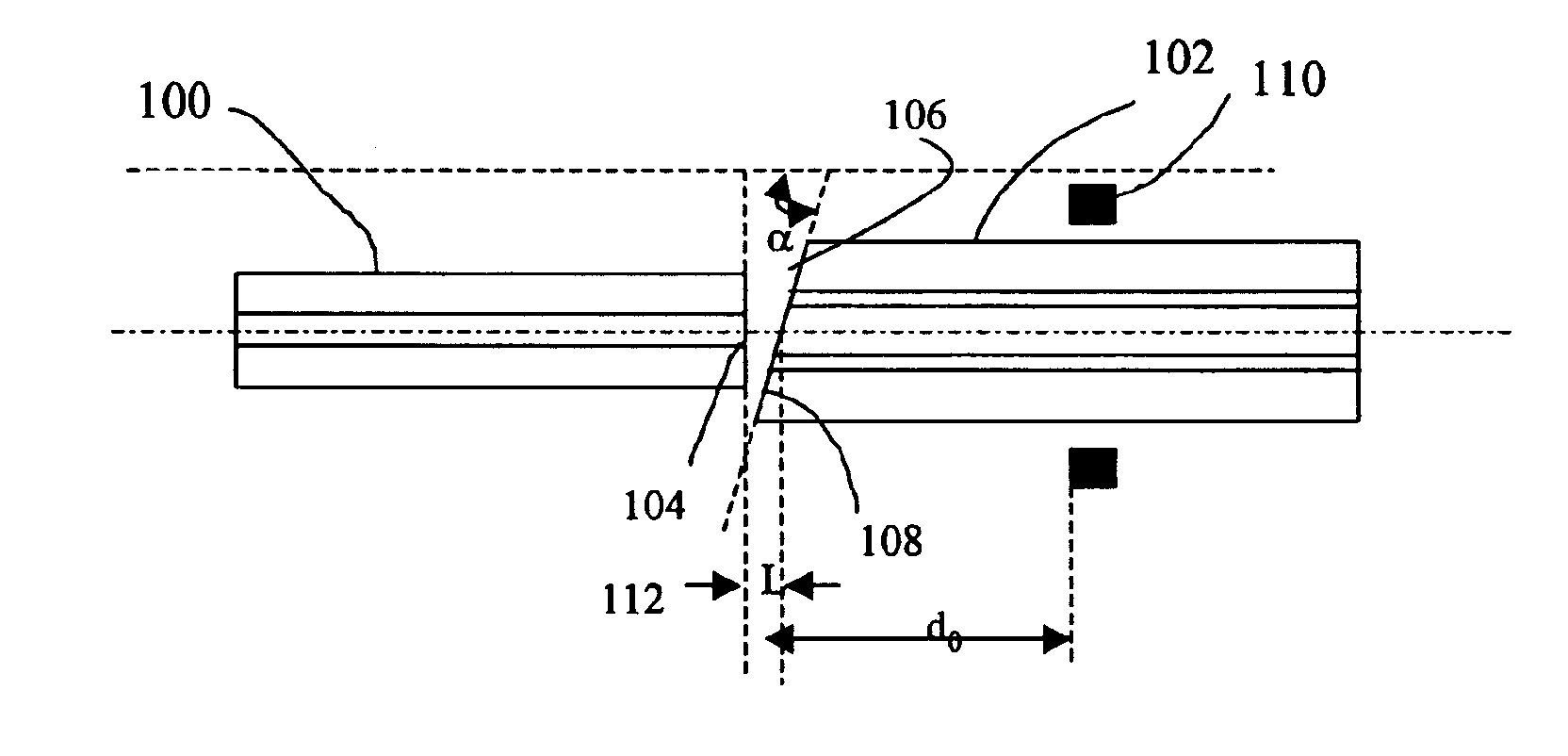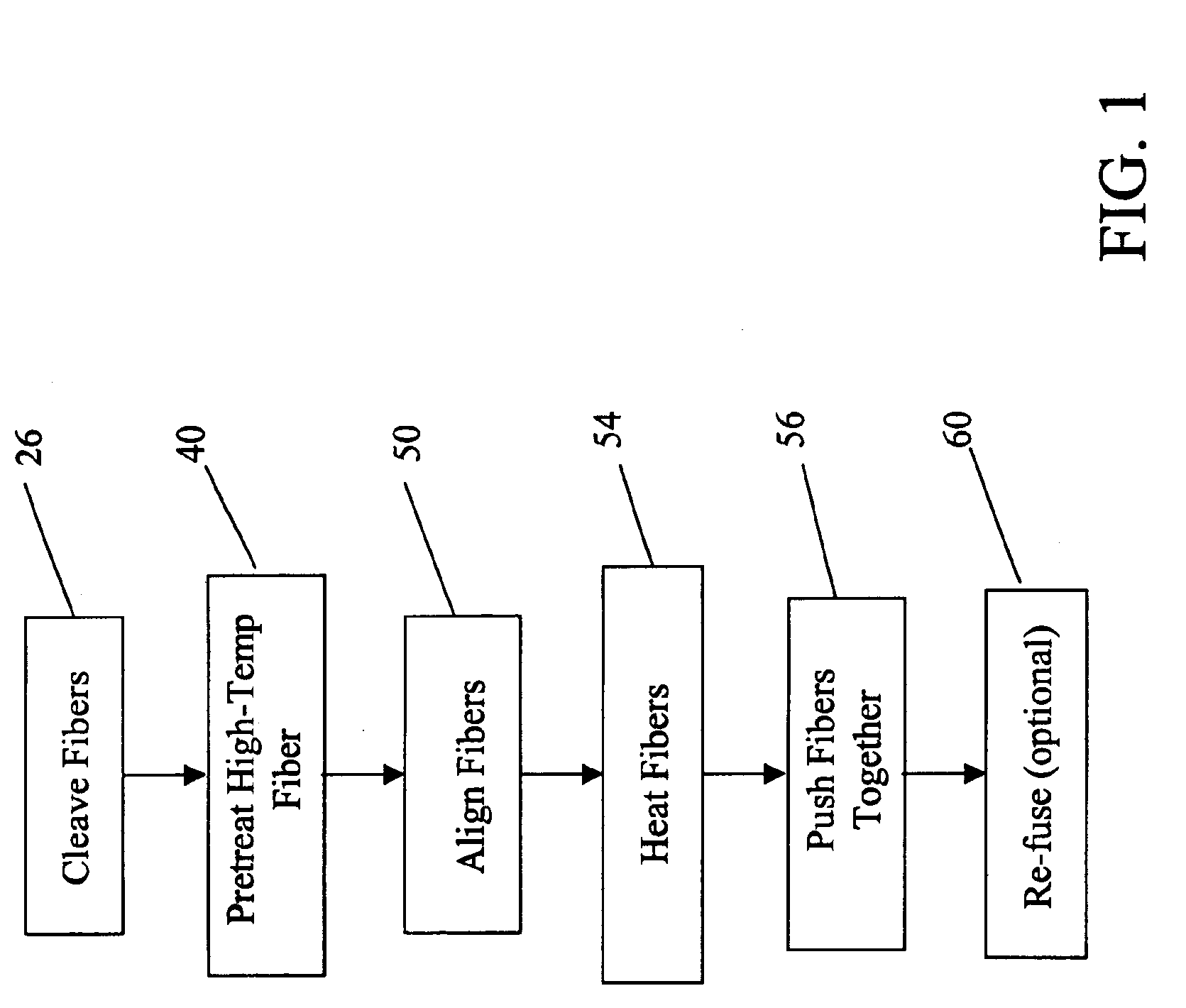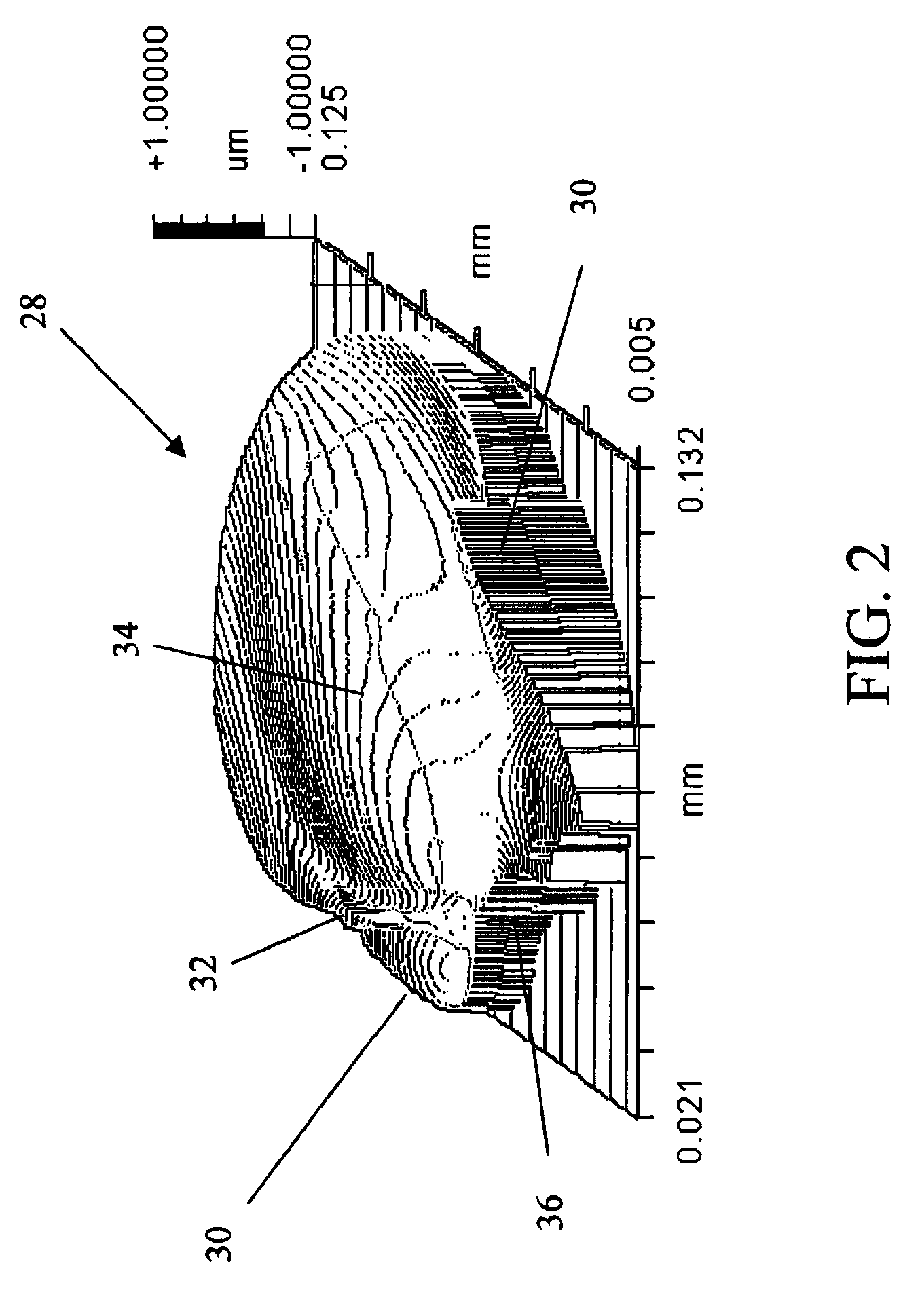Method of fusion splicing thermally dissimilar glass fibers
a technology of thermally dissimilar glass fibers and fusion splicing, which is applied in the direction of optical elements, manufacturing tools, instruments, etc., can solve the problems of ineffective thermal diffusion between the two fibers, damage to the high-temperature fiber, rough cut or twisted surface, etc., to reduce the direct heating of the low-temperature fiber, improve thermal diffusion, and maximize the temperature gradient
- Summary
- Abstract
- Description
- Claims
- Application Information
AI Technical Summary
Benefits of technology
Problems solved by technology
Method used
Image
Examples
Embodiment Construction
[0029]The present invention provides a mechanically robust fusion splice between a high-temperature fiber and a specialty low-temperature glass fiber. This type of fusion splice is particularly useful in and was motivated by the development of compact optical components such as fiber amplifiers and lasers. To eliminate fiber management and reduce package size one must use a glass fiber that provides high gain per unit length. This in turn dictates a glass such as a multi-component glass (phosphorus oxide P2O5, germanium oxide GeO2 or telluride oxide TeO2) that has a high solubility of rare-earth dopants such as erbium and ytterbium and exhibits the necessary spectroscopic properties. These glasses have a much lower softening point temperature than standard silica glass.
[0030]To avoid seriously degrading if not destroying the multi-component glass fiber when spliced to the silica fiber, it was determined through extensive testing that a lower splice temperature sufficient to soften b...
PUM
| Property | Measurement | Unit |
|---|---|---|
| softening temperatures | aaaaa | aaaaa |
| softening temperatures | aaaaa | aaaaa |
| softening temperatures | aaaaa | aaaaa |
Abstract
Description
Claims
Application Information
 Login to View More
Login to View More - R&D
- Intellectual Property
- Life Sciences
- Materials
- Tech Scout
- Unparalleled Data Quality
- Higher Quality Content
- 60% Fewer Hallucinations
Browse by: Latest US Patents, China's latest patents, Technical Efficacy Thesaurus, Application Domain, Technology Topic, Popular Technical Reports.
© 2025 PatSnap. All rights reserved.Legal|Privacy policy|Modern Slavery Act Transparency Statement|Sitemap|About US| Contact US: help@patsnap.com



